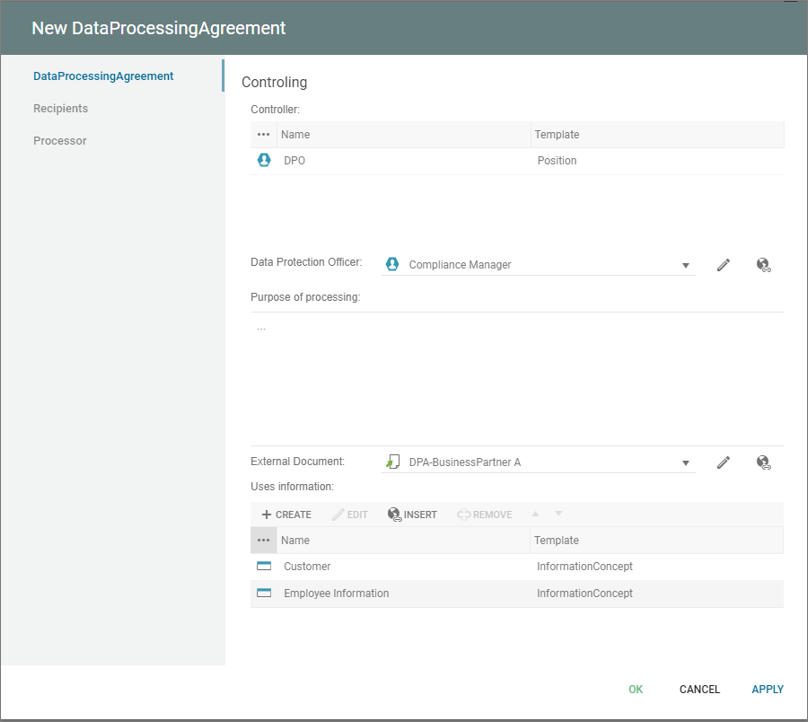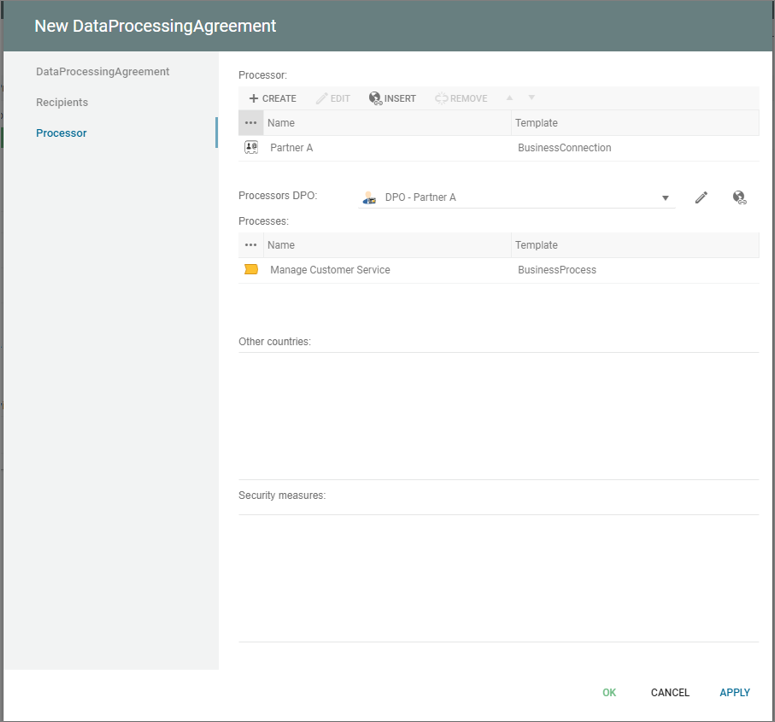A branching point where the flow diverges based on conditions (guards).
Archives: Templates
Templates and model types in the QualiWare platform.
Data Warehouse
Description of this template will be available soon.
Data Source Connection
Description of this template will be available soon.
Data Processing Agreement
This template can be used to document Data Processing Agreements.

The DPAs can be enriched and described with a whole set of properties and relations.

Data Object : ArchiMate
Data structured for automated processing. A data object should be a self-contained piece of information with a clear meaning to the business, not just to the application level. Typical examples of data objects are a customer record, a client data set, or an insurance claim. The name of a data object should preferably be a noun.

Data Mapping
Description of this template will be available soon.
Data Extract
Description of this template will be available soon.
Data Apply
Description of this template will be available soon.
Customer Segment
Description of this template will be available soon.
Customer Journey Phase
A Customer Journey Phase refers to a specific stage or step in the overall customer experience. A customer journey is made up of multiple phases, each of which represents a different stage in the customer’s interaction with a company.
The number and specific phases of a customer journey can vary depending on the organization and the type of product or service being offered. However, some common customer journey phases include:
- Awareness: This is the first phase of the customer journey and represents the customer’s initial introduction to a company or its products/services.
- Consideration: In this phase, the customer is evaluating different options and considering whether a company’s products or services are a good fit for their needs.
- Purchase: This is the phase where the customer makes a purchase, either online or in-person.
- Delivery: This phase covers the delivery of the product or service, including any issues or problems that may arise during the process.
- Use: This is the phase where the customer is using the product or service and may provide feedback or have questions or concerns.
- Loyalty/Retention: This is the final phase of the customer journey and represents the customer’s ongoing relationship with the company. This phase can include repeat purchases, advocacy, and other behaviors that indicate customer loyalty.
By mapping out the different phases of the customer journey, organizations can gain a better understanding of the customer experience and identify areas for improvement. This information can then be used to optimize the customer journey and create a more positive and seamless experience for customers.